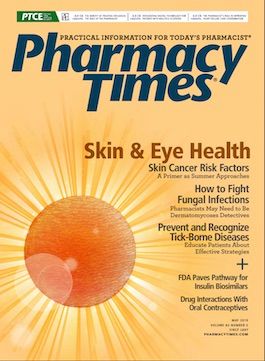Publication
Article
Pharmacy Times
What Factors Are Contributing to Drug Shortages?
Author(s):
The impact has been a continual struggle for pharmacies to provide adequate and appropriate patient care.
Drug shortages in 2018 and extending into 2019 have led to a continual struggle for pharmacies to provide adequate and appropriate patient care. National drug shortage data show, however, that 2018 was not unique. Since 2007, drug shortages have totaled more than 100 per year. The Drug Information Service at the University of Utah Health Care has tracked the number of shortages per year, with the data showing 2011 accounted for the largest total in history, at 267 (figure 1).

Several factors have contributed to recent shortages. Hurricane Maria in 2017 in Puerto Rico affected 5 of the world’s top 10 drug manufacturers and 11 of the top 20 products in the world.1 Although the devastation has helped put in place measures to prevent this impact again, the shortage of fluids and required allocations has just recently been discontinued for many manufacturers.
Restrictions on injectable opioids, including anesthesia, by the Drug Enforcement Administration (DEA) have also affected patient care. These include fentanyl, hydromorphone, and morphine injections. Although the DEA did raise the production quotas allowed for manufacturers in mid-2018, the shortage continued with recall notices and production issues from manufacturers.2
Additional shortages have resulted from manufacturers ceasing production of a generic drug, even temporarily, and the inability of other manufacturers to generate additional volumes. A lack of raw materials can also pose challenges for supply. Figure 2 identifies some of the reasons for shortages, though “unknown” is the largest contributor.

This has several implications for patients and pharmacists. The first is that patients may not be able to get a required drug or get it in sufficient quantity, resulting in either the need to find an alternative or subtherapeutic dosing. Pharmacists and providers are spending significant amounts of time researching alternatives to drug therapy. This does not include the impact on pharmacy databases and informaticists, which must continually modify the pharmacy formulary based on the National Drug Code and available package sizes. In addition, drug shortages increase the chance of errors because of changes in concentration, the need for compounding unavailable doses, or the use of multiple dose vials.
An Institute for Safe Medication Practices survey showed that nearly a quarter of all pharmacist and pharmacy worker respondents (21%) were aware of at least 1 medication error related to a drug shortage.3
In addition to the impact on patients and pharmacists, the financial burden on hospitals continues to rise. To maintain an adequate supply of inventory, pharmacies must purchase greater quantities than needed, increasing both the chance of outdated inventory and the cost of drugs. The time spent on drug shortage management for buyers also represents an increased cost, as does the increased time for pharmacists to review alternatives and shortage strategies.
To help mitigate issues causing the shortages and lessen the impact, the FDA created the Agency Drug Shortages Task Force. This committee is responsible for investigating the root causes of shortages and proposing long-term resolutions to Congress.4 Efforts include expediting inspections for manufacturers to increase production in shortages and investigating root causes to prevent future shortages.
In addition to the FDA task force, pharmacy technicians have been instrumental in managing supply issues and monitoring shortages for availability. When a shortage is discovered, technicians help identify inventory levels and predict how long these inventories can maintain supply.5 Technicians can also locate all nursing units with a drug shortage and move inventory to cover areas with more frequent dosing. Additionally, technicians are instrumental in identifying alternative sources, including direct supply, other facilities or pharmacies, and secondary wholesalers. Many technician buyers have templates established within wholesaler accounts to ease the process of frequently ordering items on shortage and creating back orders.
REFERENCES
- Jarvis LM. Hurricane Maria’s lessons for the drug industry. Chem Eng News. 2018;96(37). cen.acs.org/pharmaceuticals/biologics/Hurricane-Marias-lessonsdrug-industry/96/i37. Accessed March 21, 2019.
- Kacik A. DEA lifts production quotas to ease injectable opioid shortage. Modern Healthcare website. modernhealthcare.com/article/20180414/NEWS/180419944/dealifts-production-quotas-to-ease-injectable-opioid-shortage. Published April 14, 2018. Accessed March 21, 2019.
- Drug shortages continue to compromise patient care. Institute for Safe Medication Practices website. ismp.org/resources/drug-shortages-continue-compromise-patient-care. Published January 11, 2018. Accessed April 18, 2019.
- Agency drug shortages task force. FDA website. www.fda.gov/Drugs/DrugSafety/ DrugShortages/ucm620590.htm. Updated November 20, 2018. Accessed March 21, 2019.
- How hospital and health-system pharmacists manage drug shortages. American Society of Health-System Pharmacists website. ashp.org/-/media/assets/drug-shortages/docs/ASHP-drug-shortages-infographic.ashx. Accessed April 18, 2019.







